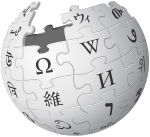Commons:Wiki Loves Monuments/Philosophy/vi

Trang này giải thích những gì về Wiki Loves Monuments và cung cấp một số thông tin cơ bản về triết lý đằng sau dự án cũng như giải thích các lý do tại sao các quyết định nhất định về một số vấn đề đã được lựa chọn trong quá khứ.
Trước hết, cần xác định rõ những mục tiêu của những người tổ chức thí điểm thành công Wiki Loves Monuments ở Hà Lan vào năm 2010. Có vẻ như khá rõ ràng rằng nhiều bức ảnh có thể được thu thập trong Wiki Loves Monuments là một điều tuyệt vời. lợi thế, nhưng cũng có một số lý do khác để tổ chức một dự án như vậy, ví dụ:
- để làm cho nhiều người biết hơn về Giấy phép tự do;
- để mọi người biết rằng họ thực sự có thể thêm nội dung vào các dự án Wikimedia.
Để những người chưa bao giờ đóng góp vào các dự án Wikimedia thực hiện bước đầu tiên sẽ tạo ra một cơ hội tiếp cận tuyệt vời; cho phép cộng đồng cởi mở chào đón những người đó cũng tạo ra một cơ hội trong tầm tay mang các cộng đồng cốt lõi trong phong trào của chúng tôi tiếp xúc với các nhiếp ảnh gia năng động có những nội dung chất lượng để chia sẻ.
At the same time, it is also a way to motivate the volunteers who normally edit Wikipedia to make a little step further, and help a little more in the organisation of the project. A reasonably well-outlined event as it is, Wiki Loves Monuments still gives plenty of freedom, and is a great opportunity to try out how to organise something in your country if you haven't yet had the experience. It is also a breeding ground for further collaborations with cultural heritage institutions which you may not have had contacts with yet; and this is something that Wiki Loves Monuments has been quite successful with:
- more than 200 volunteers collaborated on the project in as many as 18 countries;
- more than 5,000 people uploaded their images, and 4,000 of those have never contributed anything to Wikimedia before;
- in total, almost 2 million images were released for usage on Wikimedia projects.
Năm cột trụ của Wiki Loves Monuments
You may already have found the concept page which contains basic documentation about how Wiki Loves Monuments looks like. There are some important principles that seem to be the reason for the success of the project; they may seem intuitive to some, but the consequences are unintuitive to many.
Làm cho nó dễ dàng

First of all, it is important that it is easy to participate in Wiki Loves Monuments. The threshold should be as low as possible for people who have never uploaded anything. This is important both in the technical sense—we should aim at having easy-to-use upload forms—as well as in the social sense: we should not throw up rules which are not absolutely necessary and be as welcoming for newcomers as possible.
Let's just accept that there will be some low quality images; a low threshold will, however, mean that there will be also more high quality images. Let's not bother the newcomers too much with our obsession with categories, templates and layout — but let us focus on welcoming them, and suggesting how they can easily write articles about their object of interest: cultural heritage.
Làm cho nó vui

It should of course be fun to participate. This sounds obvious, but many things—for instance bureaucratic measures such as sending permission e-mails and adding categories—can make it a lot less fun. Let's try to take that away from the participants, and design the upload process in such a way that avoids sending e-mails (by, for instance, accepting only own work of the users).
No categorisation is strictly necessary, and we can simplify the process by using available database to automatically categorise images based on the monuments' identifiers. The social aspect of the project is just as important: we should try organising events and thanking people for their contributions; for instance, one possible improvement in this area is to create a thanking/badge system for participants, something that we missed in the past years.
Làm cho nó có tính địa phương

Wherever you live, participating should be nearby home. This is a practical variant of the make it easy principle: we simply don't want people to have to travel long distances to get to a monument.
Let's try to use a definition for monuments that allows as many people as possible to photograph them nearby their homes. For instance, the Netherlands have 60,000 monuments and a population of 17 million, and is rather densely populated, so it is quite easy for people to reach monuments in their neighbourhood. This, however, might not be the case in some countries, so you might for example consider adding state-level or province-level monuments if you want more objects.
Think out loud and definitely ask for input if you think you have very few monuments in your country. Don't worry about not completing the list with a photo for every object: that is not the goal. If we cover just 10% of all monuments in a single edition of the contest, this is a major achievement. Nearby home is not just important because of the time, but also because people are often proud of their own area, and want to tell the rest of the world about it!
Giúp đỡ Wikipedia

In the past two years, we learned that for many people helping Wikipedia is the main reason to participate, and we should incorporate that in all our messaging and communication.
People do care about prizes to some degree, but the super-participants with many uploads and the many people who just upload their vacation pictures because they have them anyway, will mainly participate because they want to help. Those are also the people who are more likely to stick around, and this is also why it is so important to have the monument lists on Wikipedia, and use the images there.
Đưa ra kết quả nhanh và dễ nhìn thấy nhất

Finally, it is important that participants get quick and visible results. If they upload something, we should try to have a mechanism to make the pictures actually be used. Maarten created a wonderful bot that suggests where to use a particular image — the details on this will follow soon, but this is also one of the reasons why on-line volunteers are very important during the contest.
If we can put up images on the lists quickly, it has two major effects: people see that their contributions have an actual impact and will continue to participate, but they will be also able to focus on the monuments that need their help most: those without a photo, or with a very bad photo.
Please try to keep these lessons in mind when organizing your contest. Internally, this translates to two good practices:
- communicate often, communicate well — inside your group, outside of it as well as with the other participating countries (sharing experiences is encouraged!);
- keep it simple.